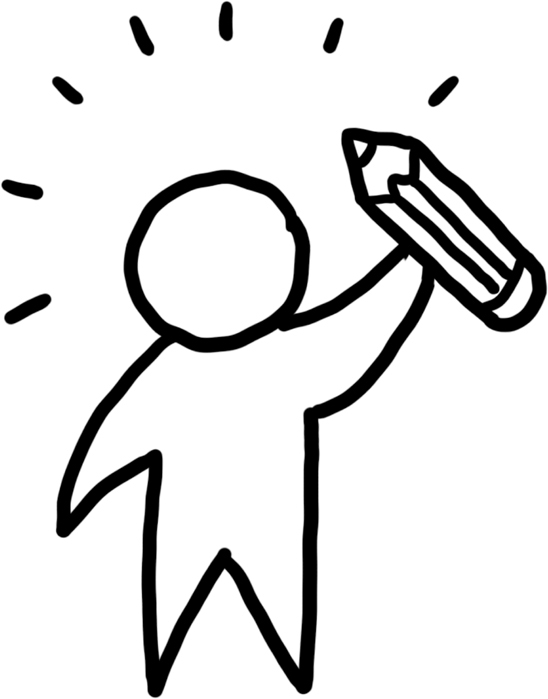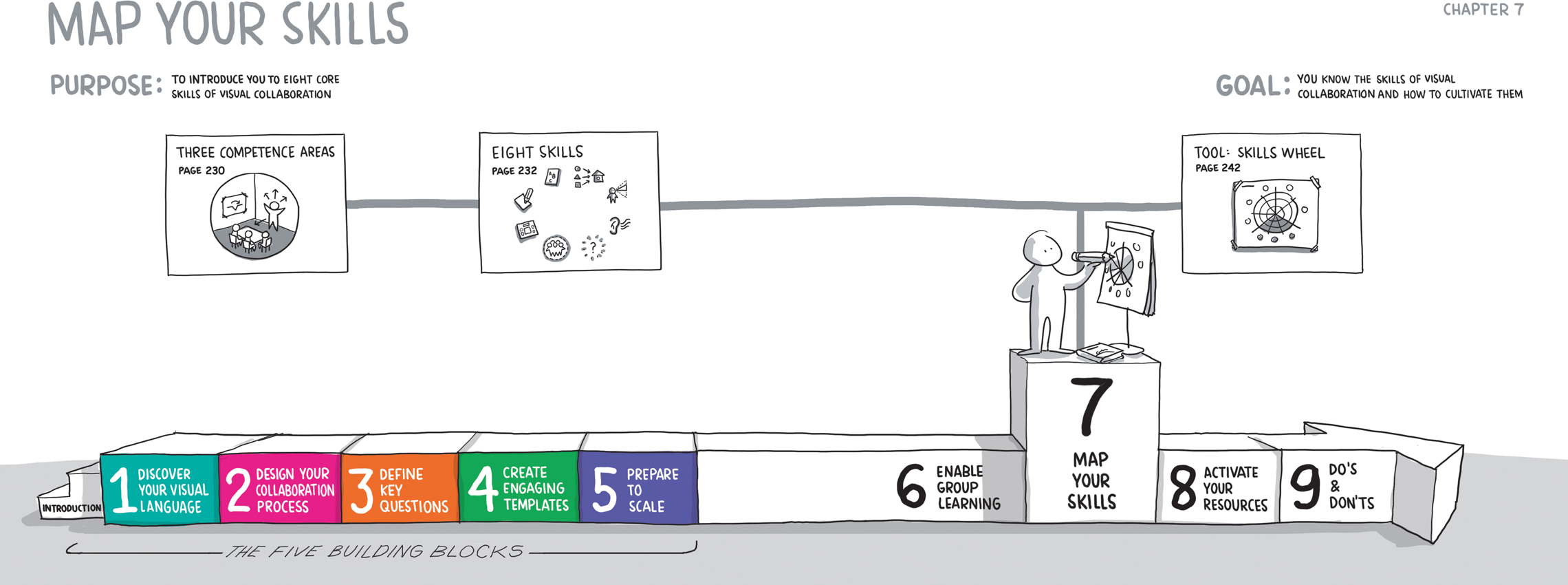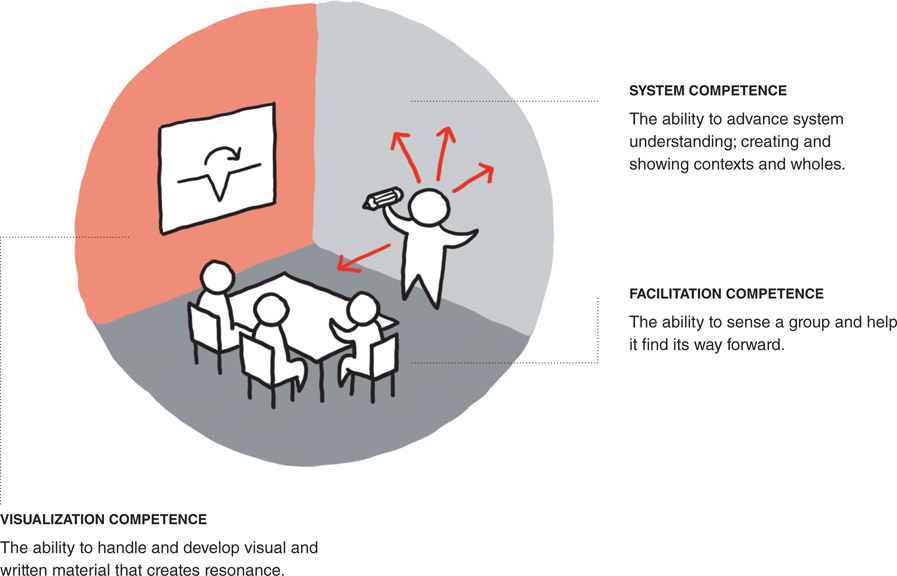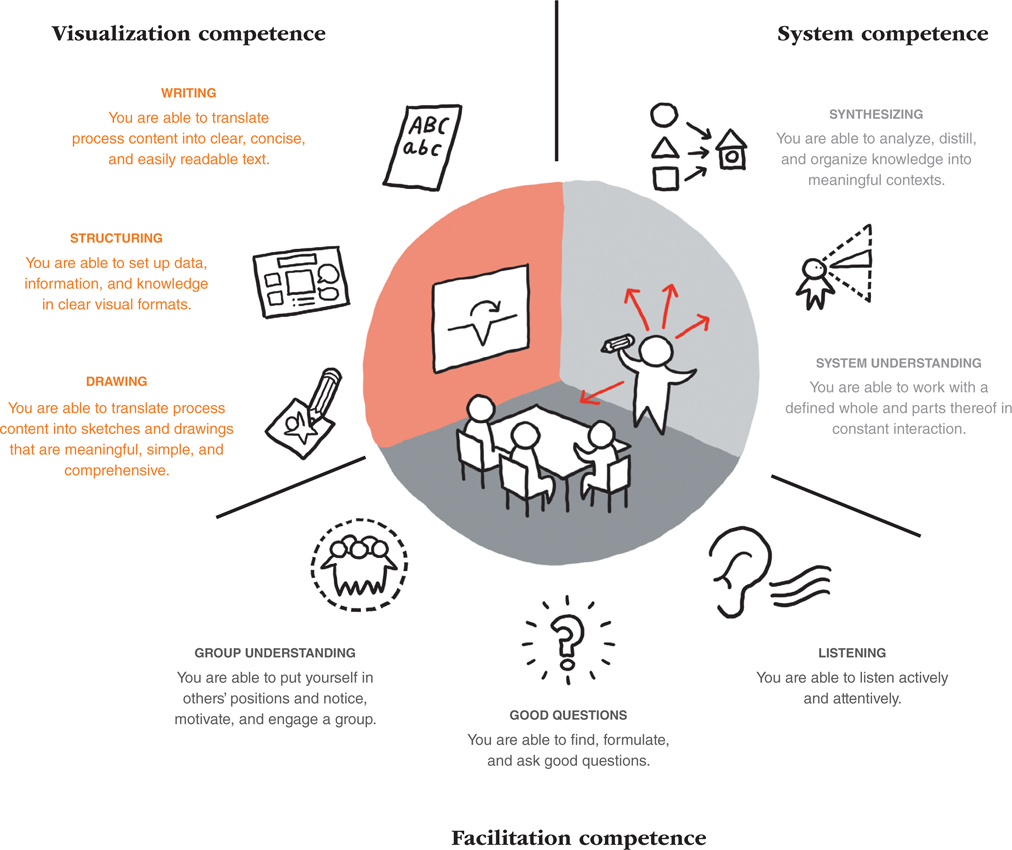7. Map your skills


Three competence areas
We have identified three competence areas that we find particularly useful to master when you are facilitating, preparing, or otherwise working visually.

Eight skills
Under each of the three competence areas, we have selected a series of practical skills to practice if you wish to improve at working visually.

 Group understanding
Group understanding
To see from other people's perspectives, sense a group, and motivate and engage it.
Why?
Group dynamics are important; they have an impact on what a group can achieve. A group's ability to collaborate and learn together is advanced when the individual group participant feel that they are part of a community. This happens when each person is seen, heard, and understood. If you can facilitate this, you are creating both a good foundation for your shared work and legitimacy around your role as a facilitator. If you can at the same time show that you understand the needs of the group and work with them in a structured ...
Get Visual Collaboration now with the O’Reilly learning platform.
O’Reilly members experience books, live events, courses curated by job role, and more from O’Reilly and nearly 200 top publishers.

